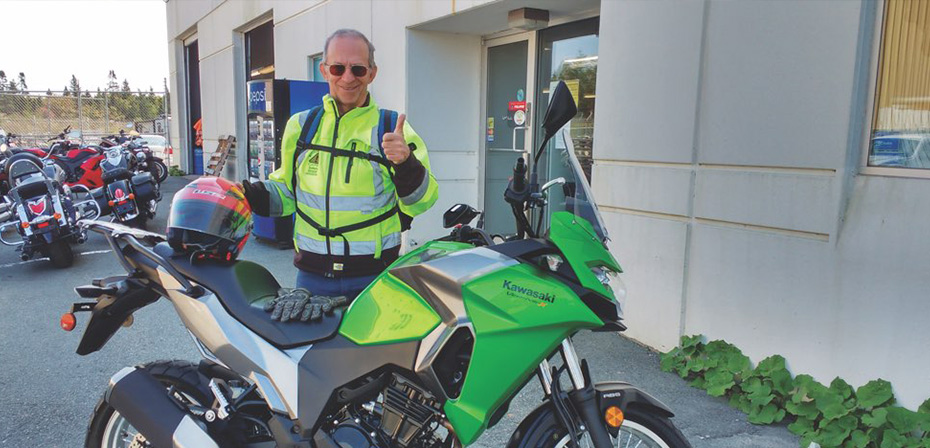In Europe it’s common to ride small bikes. Why not in North America?
“So, let me understand this better,” I said to my student. “You and your 6’2” [then] boyfriend, bought a 1983 Honda CM250 Custom in Vancouver and rode it
6,000 km two-up across Canada to Kentville, Nova Scotia?”
“Yes,” said Justine Sturgeon, one of my students on the motorcycling basic course in New Minas, N.S., in the spring of 2012. They were out in B.C. planting trees in 2011 and decided to load up their camping gear and belongings on a trusty, small (17 hp) Honda and ride it across Canada.
Justine and Nathan Mentink’s fun 10-day adventure crossing Canada on a small-bore bike made me think that maybe many North American motorcyclists are missing out on a fun segment of riding. Often, over the eight years that I taught as a motorcycle instructor with Nova Scotia Safety Services, I was surprised and concerned about the large number of beginners going to big bikes right out of the course.
What is a Small-Bore Bike?

British motorcyclist Ted Simon, who wrote Jupiter’s Travels, went around the world for four years beginning in 1973 with a 500 cc Triumph Tiger 100, which has the same 40 horsepower as my Versys-X 300. He wrote that the smaller bike allowed him to get through tight areas easily and most of his riding was at 80 km/h anyway, so the smaller bike was all he needed.
Small Bikes’ Advantages

Buying a big bike to keep up with your friends may get you in trouble faster if you are new to riding. Buy what you need, and not what your ego needs. I went out riding last summer in Nova Scotia’s Annapolis Valley with two friends on their 1200 cc and 1600 cc Harleys. I easily kept up all day while getting twice the fuel economy. I cannot think of any downsides to starting off with a lightweight bike. You will have a lot of fun without the stress of handling a big beast.
Buying a lightweight bike to build up experience will allow a new rider to move up confidently to a heavyweight later on with ease. Maybe you will find that a lightweight bike is all you need. My wife and I toured Europe for three years out of Belgium on a Kawasaki Vulcan EN500. A lightweight bike is also easy to sell.
For those experienced riders with a shiny 360 to 400 kg cruiser in their garage, having a spare 135 kg dual-sport, for example, is a nice option. Motorcycle Mojo editor Glenn Roberts discovered during his research for a previous article that 60 per cent of Canadian roads are gravel. The lightweight dual-sport allows more dirty fun minus all the worries!
What more incentive do you need?














